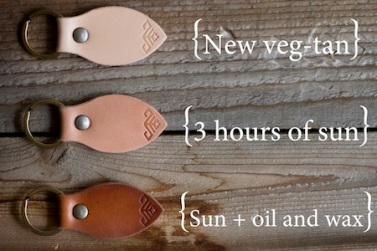The act of tanning is to make animal hides into leather. While the process of tanning permanently alters the protein in the hide for durability and longevity.
Vegetable tanning inparticular uses a tannin naturally found in the bark and leaves of many plants (mostly trees, such as chestnut and oak). This age-old tradition has been passed down for generations from father to son. The skilled craftsmen stretch the hides on frames and place them in large vats/wooden drums for several weeks (up to 60 days) of increasing concentrations of tannin. Once tanned the hides become less water-soluble, more flexible, and more resistant to bacterial attack. The supple browns that are created during tanning age with use making very rich warm tones; this process creates unique characteristics and one of a kind products. The price of vegetable tanned leather goods directly correspond with the higher quality and skill level it takes to produce each article.

Unfortunately high quality vegetable tanning is disappearing in Europe; the exception is here in Italy where, especially in Tuscany, we have no shortage of beautiful vegetable tanned leather bags and accessories. “Choosing Tuscan Vegetable Tanned Leather is not only for the quality and value of a product it is for the vital, sensual experience of using it day by day.” – Pelle Conciata al Vegetale in Toscana

Just look for the following logo to know that your bag or accessory was vegetable tanned and made in environmentally friendly conditions. They can even be recycled (but why would you ever want to discard them)! You can be assured that these animals don’t die for their hides.
One thought on “AT A GLANCE… The Art of Vegetable Tanning”